Photo

Sultan Murad IV - Reign and Legacy
Repairing and Enriching Sacred Sites
The Tombs of Imam-i Azam and Sheikh Abdulkadir Geylani, revered figures in Islam, underwent extensive repairs supervised by Sheikhulislam. They were adorned with opulent gold and silver lamps along with jewelry, enhancing their grandeur and significance. Additionally, Mustafa Pasha, the trusted guard of Sultan Murad IV, displayed profound devotion by sending a diamond to adorn the Prophet’s Tomb in Medina (Ravza-i Mutaharra).
International Diplomacy and Remarkable Gifts
Sultan Murad IV’s reign saw prosperity that extended its influence to the farthest reaches of the east. An envoy from India arrived in Musul bearing lavish gifts while the Sultan was en route from Baghdad to Istanbul. Among these gifts was an exquisitely decorated belt valued at fifty thousand piasters and a unique helmet crafted from elephant’s ear and rhinoceros hide, reputed to be impervious to bullets and swords. In a display of his prowess, Sultan Murad IV pierced the helmet effortlessly with his spear, filling it with gold florins before returning it to the Indian Sovereign’s palace.
Restoring Order and Stability
Sultan Murad IV’s rule was marked by his unwavering authority, which he wielded to maintain order within the empire, rescuing it from the brink of collapse. However, the toll of such authoritarianism took a toll on him, leaving him exhausted. Upon his brother Sultan Ibrahim’s ascension to the throne, order had already been established, aided by a treasury brimming with resources.
The Reformative Era Under Sultan Ibrahim
During Sultan Ibrahim’s reign, characterized by historians as a period of folly, Kara Mustafa Pasha, a seasoned vizier, served as Grand Vizier. Under his leadership Istanbul Walking Tour, the treasury remained stable, intoxication was abolished, and administrative reforms were implemented, including city registrations and the first census. He ensured timely payments for Janissaries and Spahis, with salaries fixed at eighty aspers of pure silver. Moreover, he introduced the practice of allocating clothing aid annually from the treasury. Despite his remarkable achievements, Kara Mustafa Pasha met an untimely end through execution in 1053.
Legacy and Conclusion
Sultan Murad IV’s reign left an indelible mark on Ottoman history, marked by prosperity, diplomatic prowess, and authoritative governance. His legacy endured through the reforms initiated under Sultan Ibrahim, underscoring the significance of stable governance and administrative efficiency in sustaining an empire.
0 notes
Photo
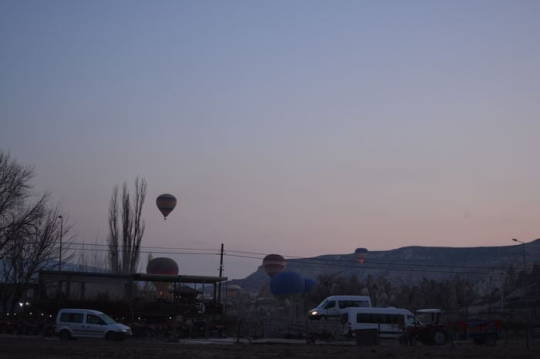
The Bulgarian Way of Life
The Bulgarians, much like the Russian peasantry, uphold traditional patriarchal values.
Family Bonds
In Bulgarian households, multiple generations often reside under one roof, with fathers, married sons, and their descendants cohabiting until the grandfather passes away. With each new marriage, an additional room is constructed onto the family home, accommodating the growing family unit. This communal living arrangement fosters a sense of unity, with all members paying homage and deference to the family patriarch.
Population Estimations
Estimating the population of Bulgarian villages requires a nuanced approach. While the number of houses may suggest a certain figure, it’s essential to consider the average household size. According to Edip Effendi’s report, the village in question purportedly had only 1,400 inhabitants—a claim deemed highly dubious by Mr. Schuyler. Through examination of tax records, Schuyler discovered 1,421 able-bodied men subject to military exemption tax. In most European countries, this figure would signify a population of approximately 15,000. However, due to unique circumstances in Bulgaria, the actual population likely ranges between 8,000 to 10,000 individuals Tour Packages Balkan.
Misconceptions and Realities
Dispelling Myths
There exists a prevalent misconception regarding the Bulgarians’ level of civilization. Often dismissed as primitive savages akin to American Indians, this stereotype fails to capture the true essence of Bulgarian society.
Education and Enlightenment
Contrary to popular belief, Bulgarian villages boast thriving educational institutions. Despite challenges posed by Turkish authorities, these schools, supported by voluntary taxation, provide free education to children of all backgrounds. Nearly every Bulgarian child receives instruction in reading and writing, with literacy rates comparable to those of England and France.
Challenging Perceptions
It is imperative to challenge outdated perceptions of Bulgarian society. The widespread dissemination of false narratives undermines the rich cultural heritage and progressive strides made by the Bulgarian people. By acknowledging their educational achievements and societal advancements, we can dispel the myth of Bulgarian “savagery” and recognize the nation’s rightful place among civilized societies.
0 notes
Photo

The Citadel of Power
The Citadel’s Significance
Tsarevets stood as the primary fortress of the Second Bulgarian Kingdom, perched upon cliffs overlooking the winding Yantra River. Its imposing stone walls guarded the heart of Bulgarian power, with access primarily from the west via a fortified rocky isthmus boasting three successive gates. Notably, the southeast portion of the fortress housed the Frenkhisarska Gate, linking Tsarevets to the district of the Frenky, home to foreign traders.
Situated along the south side of the west wall lies the Small Gate, or Asenova Gate, connecting Tsarevets to the “new town” and the neighboring hill Trapezitca. A central street, following a horizontal plane, interconnected all main gates and encircled the entire fortress, with smaller secondary streets branching off. District parish churches dotted the landscape, offering convenient access to the Tsar’s Palace and the Patriarchate. In front of the Palace, a Square served as a venue for receiving foreign delegates and hosting ceremonial events Private Tours Istanbul.
The Majesty of the Tzar’s Palace
Perched atop Tsarevets Hill, the Tzar’s Palace occupies a flat terrace encircled by its own fortress wall, with the primary entrance facing west towards the Square. Spanning an area of 4872 square meters, the Palace comprises throne halls in the western section and living quarters along the eastern side, including the Palace church. The southern section housed agricultural areas and food court buildings, delineated by a stone wall, all interconnected by spacious courtyards.
Three Construction Phases
Research reveals three distinct periods in the construction of the Palace. The initial phase likely saw the residence of a Byzantine superintendent. The second phase, under Tzar Ivan Asen The Second, witnessed significant reconstruction, elevating the structure to a royal palace. Finally, in the mid-14th century, during the reign of Tzar Ivan Alexander, further renovations reshaped the Palace to reflect the evolving needs of Bulgarian royalty.
Reconstruction Insights
Architectural reconstructions, spearheaded by B. Kuzupov, offer invaluable glimpses into the grandeur and layout of the Tzar’s Palace, shedding light on its historical significance and architectural evolution. From the central courtyard to the majestic throne halls, each aspect of the Palace speaks volumes about Bulgaria’s rich past and royal heritage.
0 notes
Photo
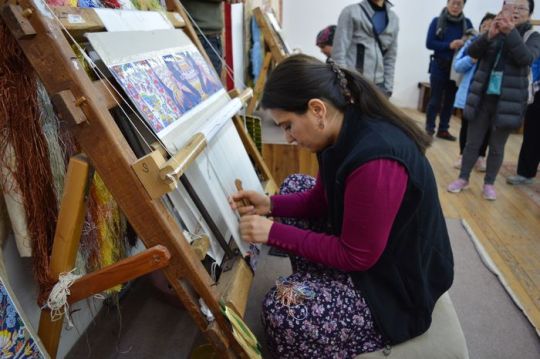
The Arrival of the Slavs in the Balkans
Background
The Slavs, originating from the eastern regions of the Russian steppe, arrived in the Balkan Peninsula around the 5th century. Over the next two and a half centuries, they gradually occupied the area, pushing aside the local Hellenized population, especially in Thrace and Macedonia. By the end of this period, the Slavs had settled across the entire peninsula, except for the coastal regions where the existing inhabitants relied on the military strength of Byzantium to keep the new settlers away.
Byzantine Relations with the Slavs
The Byzantine emperors did not see the Slavs as enemies. The Slavs were peaceful tribes who became farmers and herders. They were not aggressive or politically driven. Over time, the Slavic settlers were even called upon to fight alongside the Byzantines against common enemies. The Byzantine ruling court viewed the gradual settlement of Slavic farmers and herdsmen in the Balkans favorably City Tour Istanbul.
Old Bulgarians’ Arrival (Around 650 A.D.)
Around 650 A.D., a powerful group of Old Bulgarians, led by their khan Asparukh, arrived at the banks of the Danube, dividing Romania from Bulgaria. Settling in North Dobrudja, they initiated raids on Byzantine territory. The Old Bulgarians had originated from the region between the Volga River and its tributary, the Kama. Unlike the Slavs, they were more politically oriented. Over the centuries, small migrant groups of Old Bulgarians had integrated into Slavic communities. The Old Bulgarians, skilled organizers, extended their political influence over the Slavs, providing them with a name, a sense of unity, and leadership. They adopted the Slavs’ language and embraced a greater sense of democratic policy.
0 notes
Photo

The Arrival of the Slavs in the Balkans
Background
The Slavs, originating from the eastern regions of the Russian steppe, arrived in the Balkan Peninsula around the 5th century. Over the next two and a half centuries, they gradually occupied the area, pushing aside the local Hellenized population, especially in Thrace and Macedonia. By the end of this period, the Slavs had settled across the entire peninsula, except for the coastal regions where the existing inhabitants relied on the military strength of Byzantium to keep the new settlers away.
Byzantine Relations with the Slavs
The Byzantine emperors did not see the Slavs as enemies. The Slavs were peaceful tribes who became farmers and herders. They were not aggressive or politically driven. Over time, the Slavic settlers were even called upon to fight alongside the Byzantines against common enemies. The Byzantine ruling court viewed the gradual settlement of Slavic farmers and herdsmen in the Balkans favorably City Tour Istanbul.
Old Bulgarians’ Arrival (Around 650 A.D.)
Around 650 A.D., a powerful group of Old Bulgarians, led by their khan Asparukh, arrived at the banks of the Danube, dividing Romania from Bulgaria. Settling in North Dobrudja, they initiated raids on Byzantine territory. The Old Bulgarians had originated from the region between the Volga River and its tributary, the Kama. Unlike the Slavs, they were more politically oriented. Over the centuries, small migrant groups of Old Bulgarians had integrated into Slavic communities. The Old Bulgarians, skilled organizers, extended their political influence over the Slavs, providing them with a name, a sense of unity, and leadership. They adopted the Slavs’ language and embraced a greater sense of democratic policy.
0 notes
Photo

The Arrival of the Slavs in the Balkans
Background
The Slavs, originating from the eastern regions of the Russian steppe, arrived in the Balkan Peninsula around the 5th century. Over the next two and a half centuries, they gradually occupied the area, pushing aside the local Hellenized population, especially in Thrace and Macedonia. By the end of this period, the Slavs had settled across the entire peninsula, except for the coastal regions where the existing inhabitants relied on the military strength of Byzantium to keep the new settlers away.
Byzantine Relations with the Slavs
The Byzantine emperors did not see the Slavs as enemies. The Slavs were peaceful tribes who became farmers and herders. They were not aggressive or politically driven. Over time, the Slavic settlers were even called upon to fight alongside the Byzantines against common enemies. The Byzantine ruling court viewed the gradual settlement of Slavic farmers and herdsmen in the Balkans favorably City Tour Istanbul.
Old Bulgarians’ Arrival (Around 650 A.D.)
Around 650 A.D., a powerful group of Old Bulgarians, led by their khan Asparukh, arrived at the banks of the Danube, dividing Romania from Bulgaria. Settling in North Dobrudja, they initiated raids on Byzantine territory. The Old Bulgarians had originated from the region between the Volga River and its tributary, the Kama. Unlike the Slavs, they were more politically oriented. Over the centuries, small migrant groups of Old Bulgarians had integrated into Slavic communities. The Old Bulgarians, skilled organizers, extended their political influence over the Slavs, providing them with a name, a sense of unity, and leadership. They adopted the Slavs’ language and embraced a greater sense of democratic policy.
0 notes
Photo

The Balkan Wars
Unraveling Aspirations and Shifting Alliances
Paving the Way for Conflict
As Bulgaria’s capital industry burgeoned, the need for trade outlets in the Aegean became apparent. Simultaneously, the people of Macedonia and Lower Thrace endured the enduring burden of Ottoman rule. In this complex landscape, a war seemed inevitable, driven by varied aspirations that momentarily converged on common goals.
War as a “Sacred Cause”
Post-insurrections and the attainment of state independence, the Bulgarian populace viewed war against Turkey as the sacred means to address the national question. This endeavor aimed to liberate compatriots in Macedonia and the Odrin region, offering a potential solution to their plight.
The Balkan Alliance Emerges
With the global powers teetering on the brink of a world war, the Triple Alliance and the Entente sought allies in the Balkans. The result was the formation of the Balkan Alliance under Russian patronage. This strategic coalition united Balkan Christian states against a still formidable Turkey and served as a tool for the Entente’s influence in the Peninsula Private Turkey Tours.
Exploiting Ottoman Weakness
Seizing the weakened state of the Ottoman Empire after its defeats in the war with Italy, the Bulgarian rulers, alongside Serbia, Greece, and later Montenegro, established the Balkan Entente in 1912. This alliance aimed to exploit the Ottoman Empire’s vulnerability.
Bulgarian-Serbian Treaty
The Bulgarian-Serbian Treaty, signed on February 29th, 1912, targeted Turkey and envisioned the division of future free Macedonia into two regions or zones. Bulgaria, assuming a pivotal role in the conflict, committed to deploying a substantial force and leading the war on the crucial Thracian front against the principal Turkish forces.
Challenges Within the Balkan Alliance
While the Balkan Alliance promised unity, it soon became evident that the union was fragile and temporary. Unresolved territorial issues created internal tensions. Bulgaria, undertaking significant responsibilities, found itself grappling with the explosive dynamics of conflicting interests within the alliance.
Prelude to Conflict
The Balkan Wars were not just battles on the Thracian front but also a complex interplay of shifting alliances, national aspirations, and geopolitical strategies. As Bulgaria assumed a central role, the stage was set for a conflict that would reshape the region’s political landscape.
0 notes
Photo

The Unveiling of Unspeakable Horrors
Women’s Descent into Despair
Confessions of Dishonour A Brave Prelude
In the shadow of unthinkable horrors, women found courage in the act of confessional narration. They stood before the world, their voices trembling yet resolute, as they uttered the word “dishonour.” But what lay ahead was a descent into a darkness far more profound and agonizing.
Beyond Dishonour The Stain of Defilement
The narratives unfold, revealing that for women subjected to the brutality of Turkish oppression, dishonour was but a prelude. A woman’s suffering extended beyond mere shame; she faced a harrowing journey of being stained, defiled, and degraded. These stories depict a descent into a nightmarish reality, where self-loathing becomes an indelible mark, and the mirror reflects a stranger tainted by the hands of cruelty.
Echoes of Despair A Mother’s Agony for Her Daughters
The women, in their heart-wrenching confessions, weren’t shedding tears for themselves alone. A more profound grief engulfed them as they recounted the atrocities inflicted upon their daughters. Innocent and tender girls of twelve and fifteen, even children Balkan Tours, became victims of the same brutalization. A mother’s agony extended beyond personal suffering to encompass the unbearable pain of witnessing the desecration of her offspring.
Silent Screams Why Share the Unbearable?
The question arises—why these women chose to come forward, to expose their deepest wounds and utter the unspeakable? It transcends the burden of personal injustice and the foul, dreadful wrongs inflicted upon them. Perhaps, it’s the spirit wounded beyond endurance, impelled by an invisible force to scream out the injustices that Heaven must hear, if not see. A feeble hope, perhaps, that someday justice will prevail, and the avenging hand of retribution will reach those responsible.
The Unheard Stories Unspeakable Horrors Left Untold
The sheer horror embedded in these narratives defies repetition. The tales of unspeakable brutality, though left untold here, serve as a testament to the depth of human suffering. In a world where such atrocities persist, the voices that dare to break the silence become beacons, exposing the need for justice, compassion, and an unwavering commitment to end the cycle of cruelty.
0 notes
Photo
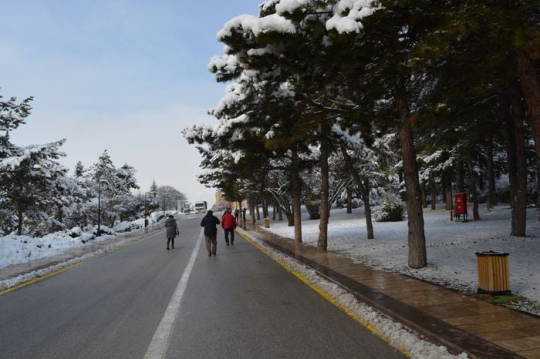
Tragedy in Perustitza
Unraveling the Brutality of the Bashi-Bazouks
In the somber chronicles of the village of Perustitza, a tale of tragedy unfolds, shedding light on the merciless actions of the notorious Bashi-Bazouks. The events that transpired during those fateful days not only left a scar on the community but also drew attention to the need for justice and accountability.
One particular incident exemplifies the ruthless nature of the Bashi-Bazouks. Among those who ventured outside the village was a Frenchman, involved in commercial activities in Philippopolis. Driven by the distressing news of unrest, he returned home in search of a fellow Frenchman who had gone missing. Unbeknownst to him, danger lurked as he encountered the Bashi-Bazouks. Fluent in Turkish, he attempted to explain his purpose to Achmet-Aga, only to find himself detained and eventually killed, presumably in a pursuit for imagined wealth.
This tragic occurrence did not go unnoticed by the French Consul, who promptly lodged a complaint. The French Government, spurred by this grievous act, likely demanded compensation for the families of the two deceased men. This incident underscores the gravity of the situation in Perustitza and unveils the murderous tendencies that fueled the actions of the Bashi-Bazouks.
Siege to the village
As the Bashi-Bazouks laid siege to the village, terrorizing its inhabitants, a grim reality unfolded. Those who lacked confidence in the benevolence of the Turks and hesitated to surrender found themselves fleeing to the fields. private tours bulgaria Their desperate escape, however, was futile as the merciless pursuers hunted them down, leaving a trail of death in their wake.
The Bashi-Bazouks, having disposed of those in their clutches, turned their attention to the abandoned homes. Pillaging with abandon, they plundered the villagers of their possessions and, with a heartless disregard, set their homes ablaze. The village, once a peaceful abode, now stood witness to the destruction wrought by the marauding forces.
Remarkably, the Bashi-Bazouks refrained from launching a direct assault on the church, opting instead to harass its occupants from a distance. Their bravery, it seemed, was reserved for confronting defenseless women and children. When faced with armed resistance, their courage waned, revealing a stark contrast in their demeanor.
For three agonizing days, the villagers endured the pillaging and burning of their homes, while the Bashi-Bazouks callously fired upon the church from a secure vantage point. The besieged villagers, relegated to the churchyard, could only watch in despair as the flames consumed the remnants of their once-thriving community.
The tragedy of Perustitza serves as a poignant reminder of the brutality that can be unleashed in times of conflict. It beckons the international community to reflect on the importance of justice and accountability, urging swift action to address the heinous acts perpetrated by the Bashi-Bazouks. In the face of such atrocities, the world must stand united to ensure that the voices of the victims are heard and that the perpetrators are held accountable for their crimes.
0 notes
Photo
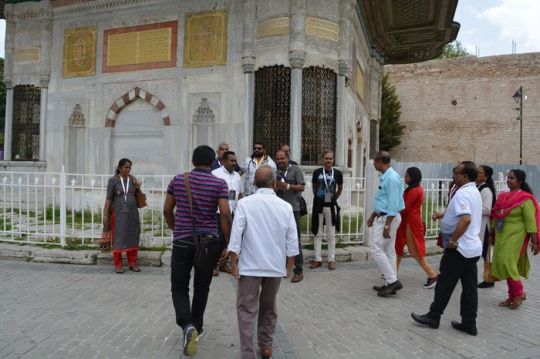
Januarius Aloysius MacGahan
A martyr to duty and friendship, januarius Aloysius MacGahan, the most brilliant journalist of the XIXth century, visited Bulgaria in July and August of the memorable year of 1876, when he wrote his famous reports on the Bulgarian uprising, reports which were to enter the annals of world journalism as epoch-making documents and classical models. These reports had an unprecedented circulation and influence.
In 1876, after the doyen of the British press « The Times », through fear of the progressive attitude reflected in his articles, refused him a post on the newspaper, MacGahan welcomed the campaign of the London newspaper « Daily News » on behalf of the Bulgarian people and rendered invaluable service to that cause. A year later, after joining the Russian army, he formed a sincere friendship with General Skobelev and General Gurko and took part in all major battles for the liberation of Bulgaria.
His descriptions of the battles of Plevna and Shipka remain outstanding examples of journalism. Despite a broken ankle, he was continuously present at operations on the front throughout the Russo-Turkish ivar. Near Istanbul, exhausted, he contracted typhoid fever ivhilst caring for his companion in arms and died on 9 June 1878 at the age of 34 City Tour Istanbul, thus Unking his destiny with the liberation of the Bulgarian people.
Frank Hill
The reports on the April uprising came as a result of the conflict which sprang up between the British government and the leaders of the liberal « Daily News » (Frank Hill, chief editor). Famous for its well organized foreign service, the « Daily News» published on the 23rd and the 30th of June 1876 a series of letters from Edween Pears, correspondent in Constantinople, referring to the monstrous atrocities in Bulgaria.
These aroused doubts amongst the British public about the government’s policy with regard to the Balkan area. To appease an excited public clamouring for more exhaustive information and to refute the accusations of the government, the editorial board of the « Daily News » decided to conduct an inquiry on its own behalf and sent out a special commissioner to Bulgaria.
0 notes
Photo
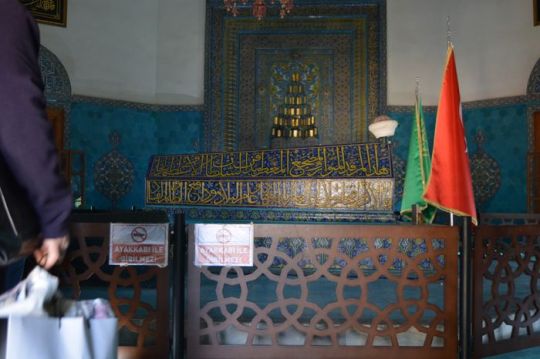
The village of Batak
The village of Batak was comparatively rich and prosperous; it had excited the envy and jealousy of its Turkish neighbours, and the opportunities of plunder offered a temptation to the Turks which, combined with their religious fanaticism and the pretext of an insurrection in another part of the country, was more than they could resist. The man Achmet-Agha, who commanded the slaughter, has not been punished, and will not be, but, on the contrary, he has been promoted to the rank of Yuzbashi, and decorated.
We are told that any number of children and young girls had been carried off; that it was known in what Turkish villages they were kept, and that the Turks simply refused to restore them to their parents. Mr. Schuyler afterwards obtained a list, with the names and ages of eighty-seven girls and boys that had been carried off with the name of the village in which each was kept.
As to the present condition of the people who are here, it is simply fearful to think of. The Turkish authorities have built a few wooden sheds in the outskirts of the village in which they sleep, but they have nothing to live upon but what they can beg or borrow from their neighbours.
Turkish authorities
And in addition to this the Turkish authorities, with that cool cynicism and utter disregard of European demands for which they are so distinguished, have ordered these people to pay their regular taxes and war contributions just as though nothing had happened. Ask the Porte about this at Constantinople, and it will be denied, with the most plausible protestations and the most reassuring promises that everything will be done to help the sufferers Private Tours Istanbul.
But everywhere the people of the burnt villages come to Mr. Schuyler with the same story—that unless they pay their taxes and war contributions they are threatened with expulsion from the nooks and corners of the crumbling walls where they have found a temporary shelter. It is simply impossible for them to pay, and what will be the result of these demands it is not easy to foretell. But the Government needs money badly, and must have it. Each village must make up its ordinary quota of taxes, and the living must pay for the dead.
0 notes
Photo
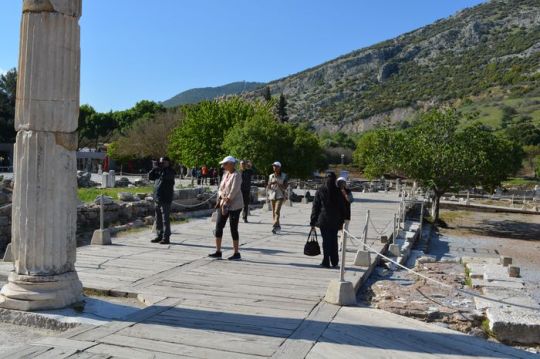
Galin Jordanov
The aim of this booklet is simple: one who has no time to read vast works can, by these few dozens of pages, get in touch with the most important events that took place during the past two millennia on the territory south of the river Danube and west of the Black Sea – the land that bears the name Bulgaria…
Galin Jordanov
A land like a human palm…
A bigger land I don’t require.
I’m glad your mountains are flint-hard And that your blood has Southern fire.
Taken from Georgi Djagarov’s “Bulgaria”, translated by Peter Tempest
From Prehistoric Times to The Forming Of A Nation
Thracians, Greeks and Romans
Archaeological excavations had shown in an indisputable way the existence of primitive man earlier than hundreds of thousands of years in the lands inhabited today by Bulgarians. Impressing collections of Hint, bone and horn tools as well as earthenware and ceramics used during the Copper and Stone Age can be seen in most Bulgarian museums. Works of idol plastic arts reveal the diverse and unique spiritual life that took place in these lands Private Tours Balkan.
However, the earliest inhabitants of the Bulgarian lands were recognized to be the Thracians – mentioned by Herodotus as “one of the most multitudinous peoples” of the Ancient world and referred to as the “horse bridlers” in Homer’s Iliad. Five thousand years ago numerous tribes of them inhabited not only the Balkan Peninsula – south of the Danube, along the river Maritza and the south-western parts of present- day Bulgaria – but also Asia Minor and some of the islands in the Aegean Sea. Thracians were of Indo- European origin and certainly represent the ethnical basis that served later as on of the genetic ingredients for the forming of the Bulgarian nation.
They were acquainted with the ways of producing iron tools and dealt well with farming or animal breeding. Thracian kings minted coins and had at their disposal skilled goldsmiths for which testimonies are the famous Thracian silver and golden treasures – such as the Rogozen or the Panagyurishte treasures – found in our lands and exposed in many countries of the world. But along with that some ancient historians admit that part of their tribes have shown themselves as good sailors who rivalled in experience the rulers of the marine expanse, the Greeks, and sometimes acted even like pirates…
Thracian culture of that period was strongly influenced by the Greek colonization of the Black Sea coastline after the 7th century B. C. as the multiple settlers of the Greek city- states established economic and cultural exchange with the Thracian lands. So was initiated the processes of Hellenization of a part of the Thracian ethnos and the mighty Greek civilization this way enriched the Thracian culture. Thracian religion took notions from the Greek divinities and, on their part, the Greeks paid tribute to the legendary Thracian singer and musician Orpheus, who had an important position in Thracian mythology.
0 notes
Photo
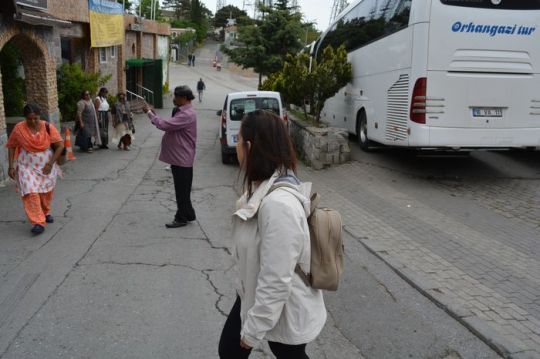
Greek general
North Side.—The sculptures on this side represent a hunting scene. The central group is composed of three figures of horsemen; that in the middle is of a mounted Persian (probably the same that is depicted at the head of the sarcophagus) spearing a lion which has sprung at his horse’s breast, and which another hunter is clubbing; the other two horsemen, one on the right and the other on the left, are galloping to the first one’s assistance; the one on the left can be no other than Alexander, as is evinced by the crown on his head, while the one on the right appears to be the Greek general who figures in the battle-scene on the other side of the sarcophagus. To the right and left respectively of the central group are two secondary ones, each composed of a Greek and a Persian; that on the left is of a Persian archer taking aim at a lion, and of a running Greek with javelin poised and aimed at a deer; that on the right is of a Greek spearing a stag which a Persian is about to club.
Foot.—Here all the figures are of Persians. In the centre a Persian (probably the same as is represented on the head and one of the side slabs) dealing a blow with his axe at a panther; to the left a henchman is trying to hold a frightened horse, under which a hound is rushing at the panther; towards the right are two more hunters about to attack the panther; while, on the left, a third bearing a buckler gives it a spear-thrust.
Cornice ornament
The lid which completes this noble monument is in itself an admirable work of art. It is in the form of a sloping roof, and rests on a plinth forming- an architrave made of a thin layer of pearl under a row of rais’de-cceur. and with a cornice ornamented with a moulding of vine leaves; denticles under a thin lintel and a row of ovulae complete the ornamentation of the plinth. Along the eaves on each side is a row of twelve three-horned he-goats’ heads ; and above these and alternating with them are nine heads of women ornamented with palm leaves. At each of the four corners of the lid is a lion couchant with open mouth and fierce eyes. The two sides of the roof are imbricated; the top is ornamented with a row of six two-faced female heads arranged alternately with pairs of eagles, placed back to back; of the latter nothing now remains but the claws, the eagles having, in all probability, been broken off in recent times.
At the top of each of the two pediments are a pair of sphinxes facing each other, and above them an open palm leaf. The carving on each of the two frontages is of most exquisite workmanship.
0 notes
Photo

Demetrius Poliorcetes and Lysiinachus
After repelling Philip, Byzantium had to submit, some years later, to Alexander. It passed through the hands of his successors, Demetrius Poliorcetes and Lysiinachus ; but on the death of the latter, regained its independence for another hundred years, until the power of Rome invaded the region of Thrace and the Hellespont. In return for the assistance it rendered to the Romans in their wars with Macedon and Antiochus, the senate conferred on Byzantium the status of a ‘ free and confederate city and it was not till the time of the Emperor Vespasian that it lost its privileges and became an ordinary provincial town (73 A.D.).
In the struggle between Septimius Severus and Pescennius Niger for the Roman Empire, Byzantium espoused the cause of the latter; but was taken by Severus, after a three years siege, in 197 A.D., and reduced to ashes. A few years later, however, he rebuilt the city and embellished it with porticoes, magnificent public baths, and part of the Hippodrome or racecourse.
During the civil wars which followed the abdication of Diocletian, the city fortifications were restored, and afforded refuge to Licinius after his defeat by Constantine at Adrianople in 323 A.D. Constantine advanced on Byzantium, and, by means of constructing ramparts and towers as high as those of the city, finally succeeded in taking it.
The acquaintance with the advantages
The acquaintance with the advantages of its position gained in this campaign no doubt decided Constantine in fixing on Byzantium as the site of his new capital daily tours istanbul. It had probably been for some time clear to him that the Empire, once more united under a firm rule, required in its new circumstances a new political centre. The advisability of transferring the seat of government from Borne to a point farther east had been felt long before. The frequent wars against Persia, the repeated revolts of Asiatic nations, the incursions of tke Scythians, troubles at Borne, that old hot-bed of civil war, had already caused Diocletian to fix his residence at Nicomedia (now Ismid); and, indeed, Julius Csesar is said to have thought of transferring the capital to Alexandria Troas (Eski-Istambol), which, from its more central situation, would enable him the easier to keep the conquered nations in subjection. Constantine, however, was also actuated by other than strategic and political motives. The abandonment of Eome marked the establishment of Christianity as the State religion. The new capital was dedicated to the Virgin Mary; and the fact that the ceremony of its inauguration was performed solely by Christian ecclesiastics, and that no pagan temples were allowed to be erected in the new city, emphatically proclaimed the downfall of Paganism.
The new city was begun in 328 A.D. The Emperor himself marked out its boundaries, which included five of the seven hills enumerated on page 1. Setting out on foot, followed by a numerous retinue, and pretending that he was following the directions of a divine guide invisible to all save himself, with his spear he drew on the ground a line that crossed the triangular promontory at a distance of about two miles from the old fortifications. Along this line the new walls were erected, and on the 11th of May 330 A.D. the inaugural festivities were commenced, and lasted forty days.
0 notes
Photo
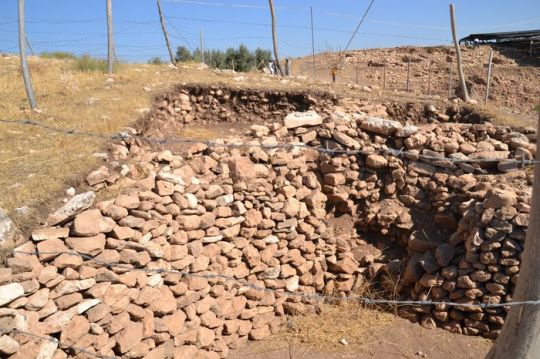
Between Jambaz and Taxim Tepe
ANTIQUE THEATRE
Trimontium’s antique theatre lies on the low ground between Jambaz and Taxim Tepe. Archaeological excavations have uncovered one of the best-preserved antique theatres in the world, built at the beginning of the 2nd c. during Emperor Trayan’s rule. The theatron, the spectators’ section, is amphitheatrical, in two semi-circles with a wide horizontal aisle in between. Each tier has 14 rows of marble seats divided into sectors by aisles. The area of the stage excels in architectural design. The skene at the back is a two-storey structure with lateral wings ending in imposing triangular pediments.
Inscriptions and exquisite statues found Antique Theatre of Philippopolis on the site have been incorporated in the architecture of the building. The theatre must have seated 5 to 7 thousand people. A fire or an earthquake at the end of the 4th c. caused irreparable damage to this remarkable antique building. The splendid skene was completely demolished, just 20 out of the 28 rows of the theatron survived. In spite of the serious destruction, archaeological research made it possible to execute a successful restoration. Now the ancient building has been entirely adapted to the contemporary cultural functions of Plovdiv and it shows various performances before an audience of 5000 people.
ANTIQUE STADIUM
The imposing remains of the stadium of Philippopolis (Trimontium) were discovered under the square west of Jumaya Mosque (Friday Mosque). Part of them is now displayed below the level of the busy street. The majestic structure measures 1000 Roman steps in length (250m) by 250 steps in width (74m). The main entrance into the stadium is below the junction of Knyaz Alexander I Street and Dr Valkovitch Street. It was designed in the solemn style of Asia Minor cities like Miletus holidays bulgaria, Ephesus and Aspendos. The seats arranged in 14 marble, amphitheatrical rows stand on supports decorated with high relief lions’ paws. The major part of the stadium is occupied by the racetrack whose length is 600 Roman steps.
It starts at the main entrance and reaches the northern side turning into a bend to accommodate chariot-racing. Part of this sector is displayed under street level and under the open sky. The marble seats and the track are clearly identifiable. In the middle of the bend there is an arched corridor leading out into a street built of large syenite slabs. You can see the impressive bases of the columns supporting the aqueduct, which fed the large reservoir on Taxim Tepe with water from the Rhodope Mountains.
During Philippopolis’ apogee (2nd -4th c.) the Antique (Roman) stadium was the venue of the traditional athletic games organized in honour of the god Apollo and Alexander of Macedon. After the Emperor Theodosius the Great suspended the games at the end of the 4th c. the Philippopolis stadium was used as a hippodrome. The final information about it comes from the Byzantine autheress Anna Comnenus (end of the 11thc.) who was deeply impressed . by what had remained of the Roman stadium. In its heyday the stadium could seat thirty thousand spectators and was one of the major public facilities in ancient Philippopolis.
0 notes
Photo
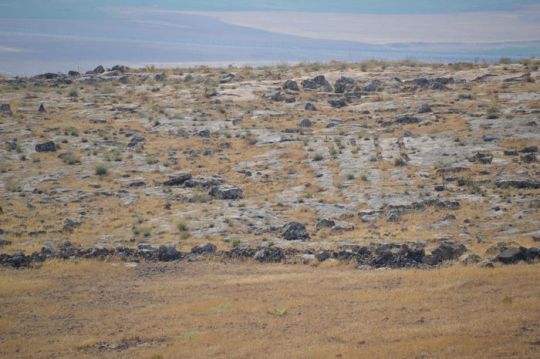
Iskra library club
One of the country’s most famous cultural institutes is the Iskra library club, founded in 1873 with library, theatre, cinema, and a museum with valuable exhibits. Here is also the famous Kazanluk Thracian Tomb, a unique monument of ancient Thracian art. It is believed that a prominent Thracian chieftain was buried in the tomb in the 4th-3rd century B.C. It consists of an antechamber, a stone corridor and a domed chamber. The frescoes on the walls, the corridor ceiling and the dome are kept at constant air temperature and humidity. The tomb is under the protection of UNESCO. There is a model nearby which is open to visitors.
Hotels: Kazanluk, 3 stars, 199 rooms, tel. 2-72-10; Roza, 2 stars, 1 Tolbukhin Rlvd.; Zomitsa, 2 stars, tel. 2-23-84.
Motel: Krunska Koriya, 2 stars, restaurant, 5 km from the town.
Camp sites: Krunska Koriya, 1 star, 5 km from the town. 12 km north of Kazanluk along the E-85 road at the very foot of the Balkan Range are the golden domes of the impressive church built 1897-1902 in memory of those who died in the Russo-Turkish War of Liberation 1877-78 private tour istanbul. The iconostasis of gilded woodwork was made in Moscow as were the bells while the icons were painted at the Panteleimon Monastery on Mount Athos, Greece. Part of the frescoes are from 1902 while the rest were painted in 1959.
Mount Shipka
A road leads up Mount Shipka to the granite monument to the handful of Russians and Bulgarians defending the Shipka Pass against the 35.000-strong army of Suleiman Pasha. The monument contains the remains of the defenders of the pass.
The neighbouring peak, Bouzloudja, has a huge monument to Communism and Socialism.
East along E-772 is the village of Muglizh (pop. 5,500; where the September uprising against fascism broke out in 1923. Sliven (pop. 98,000) is situated at the foot of the Eastern Balkan Range. The Blue Stones (a picturesque rock area) tower over the town. Sliven was first mentioned in the journal of the Arabian traveller, Idrissi, 1153, but archaeological studies in the area show there was a settlement in Roman times. Bulgaria’s first textile mills were opened here in 1834.
Tourist attractions:
Monument to Hadji Dimiter in the town centre.
Monument to the Soviet Army stands on Haman Bair hill in a park south of the town.
Bust of Dobri Zhelyazkov in the town centre.
Bust of Dobri Chintoulov in Hadji Dimiter’s Square.
Bust of Subi Dimitrov — Sliven’s favourite who when sur-rounded by police in 1941 killed himself so as not to fall into their hands.
0 notes
Photo

Boyansko Hanche
Bulgarian restaurants: Boyansko Hanche, Boyana District—telephone 56-30-16; Goroublyansko Hanche, Goroublyane District — telephone 78-12-60; Shoumako, Simeonovo District; Vodenicharski Mehani, Dragalevtsi District — telephone 66-50-88; Zlatna Ribka — 26 kilometres from Sofia on the road leading to Borovets winter resort; Chemata Kotka — 13 kilometres south-east of Sofia on the E-80 road.
Restaurants: Roubin, Lenin Square; Kristal — 119 Rakov- ski Street; Krim — 2 Dobroudja Street, telephone 87-01-31; Botevgradska Sreshta — 1 Pozitano Street, telephone 87-05-14;
Gambrinous — 80 Tsar Simeon Street, telephone 83-5 L74; Bu- dapeshta — 145 Rakovski Street, telephone 87-27-50; Ropota- mo — 73 Lenin Blvd, telephone 72-25-16; Havana — Vitosha Blvd.
Coffee houses
Coffee houses: Brazilia — 24 Vitosha Blvd.; telephone 88-28-39; Bulgaria — 2 Rousski Blvd., telephone 87-19-77; Co-lombia — 4 Levski Street, telephone 8743-03; Havana — 151 Rakovski Street, telephone 87-48-94; Roza — 4 Sofiiska Ko- mouna Street, telephone 88-40-87; Praga — 145 Rakovski Street, telephone 87-52-76; Opera — 113 Rakovski Street, telephone 87-40-89; Havana — Vitosha Blvd.
Souvenir shops: Sredets Souvenir Centre opposite Rila Hotel; Prizma — 2 Rousski Blvd., telephone 88-15-67; Sofia — 16 Georgi Dimitrov Blvd., telephone 83-29-58; Union of Bulgarian Artists souvenir shop, 6 Rousski Blvd., telephone 88-39-37; Mineralsouvenir — 10 Rousski Blvd.
Photographic materials: 3 Alexander StamboliiskiBlvd., telephone 87-72-74; Central Department Store, fourth floor, telephone 87-96-21.
Optician’s: 14, Vitosha Blvd., telephone 87-18-11; 7 Graf Ignatiev Street daily sofia tour, telephone 87-29-43.
Florist’s: 8 Pozitano Street, telephone 87-01-26; 11 Vito- sha Blvd., telephone 88-20-46,
Bookshops: the Victor Hugo bookshop for foreign and Bulgarian books, 6 Rousski Blvd., telephone 88-43-08.
The Corecom Foreign Trade Enterprise has shops selling goods manufactured abroad . These can be bought with convertible currency: 8 Tsar Kaloyan St. tel. 88-19-75;Novotel Evro- pa 131 Georgi Dimitrov Blvd., tel. 3-12-61; 166 Rakovski St. tel. 88-06-73; 27 Tolbukhin Blvd., tel. 88-44-50; Grand Hotel Sofia, Narodno Sobranie Square, tel. 23-01-02; Hotel Vitosha New Otani, 100 Anton Ivanov Blvd,, tel. 6241-51; Hotel Shtastlivetsa in Mount Vitosha, tel. 66-50-24,
0 notes